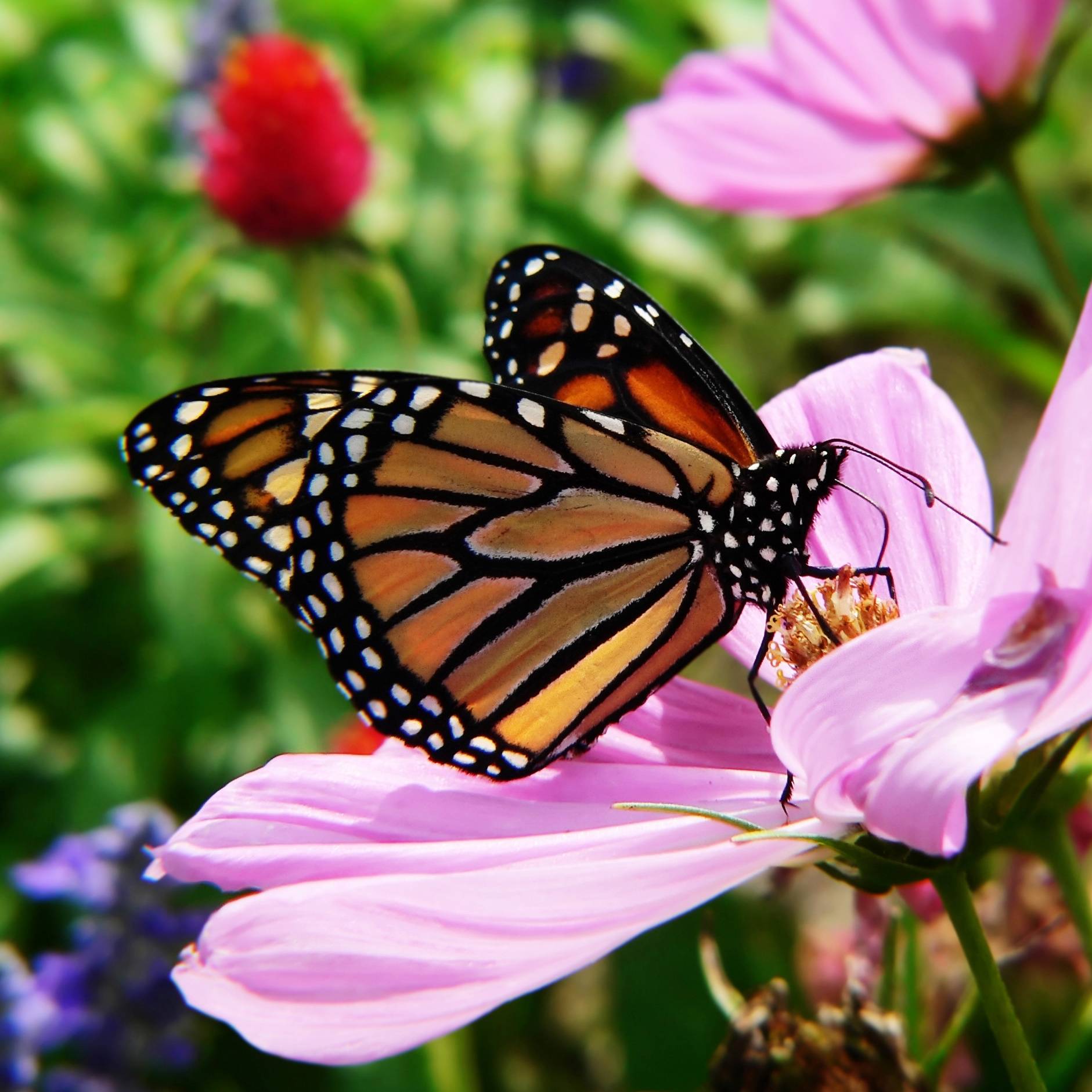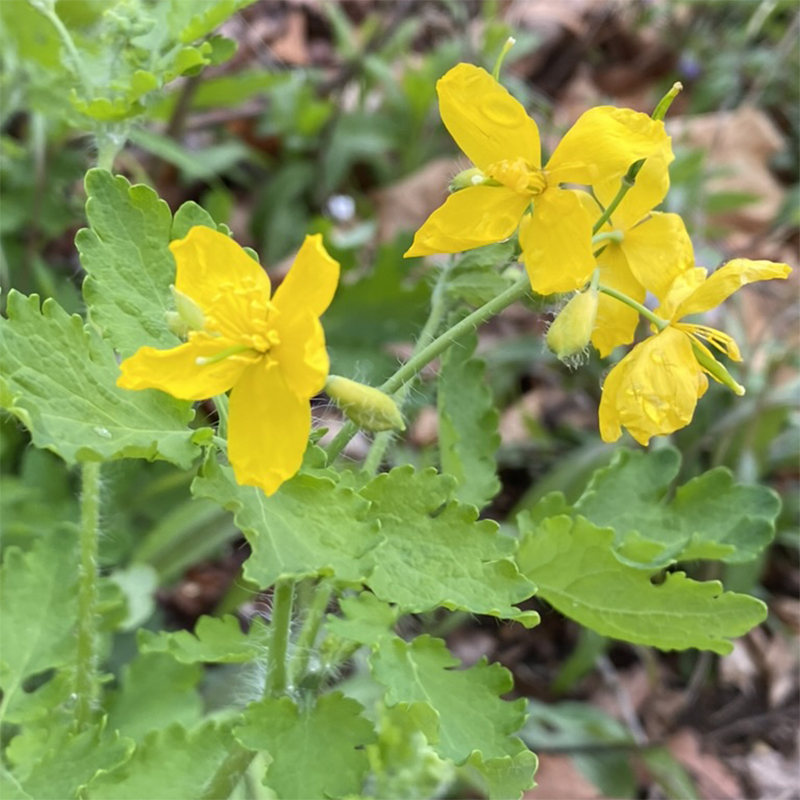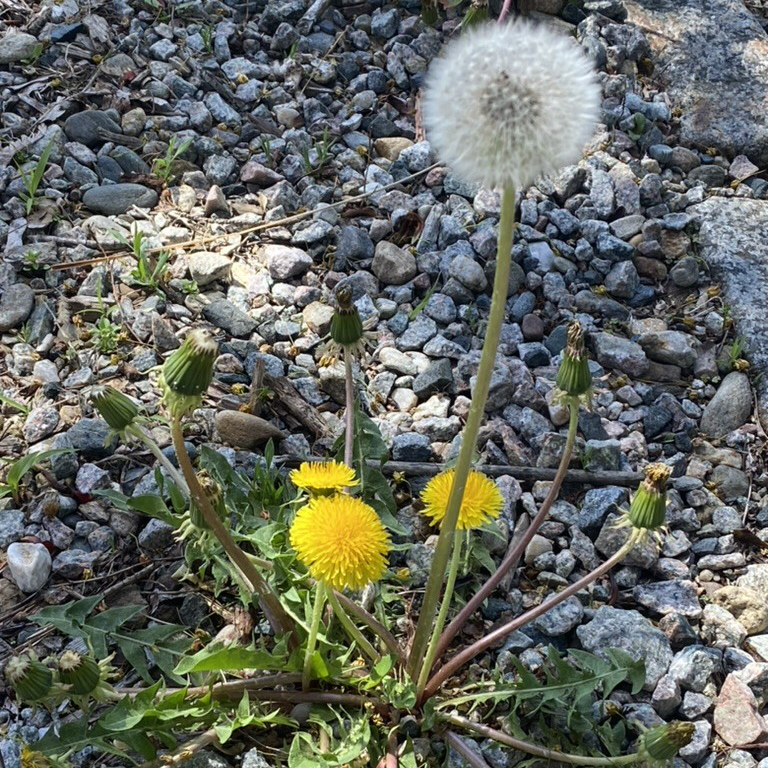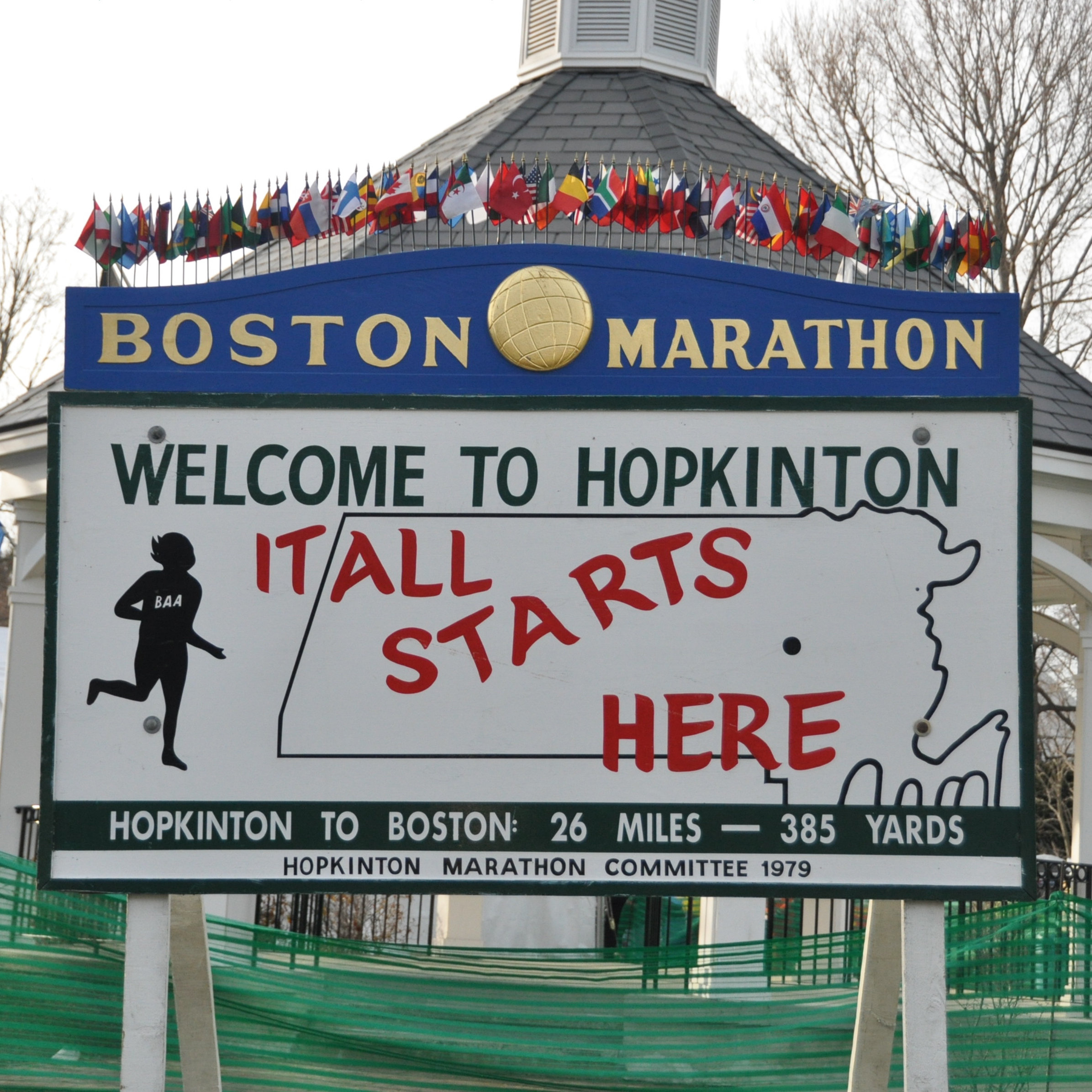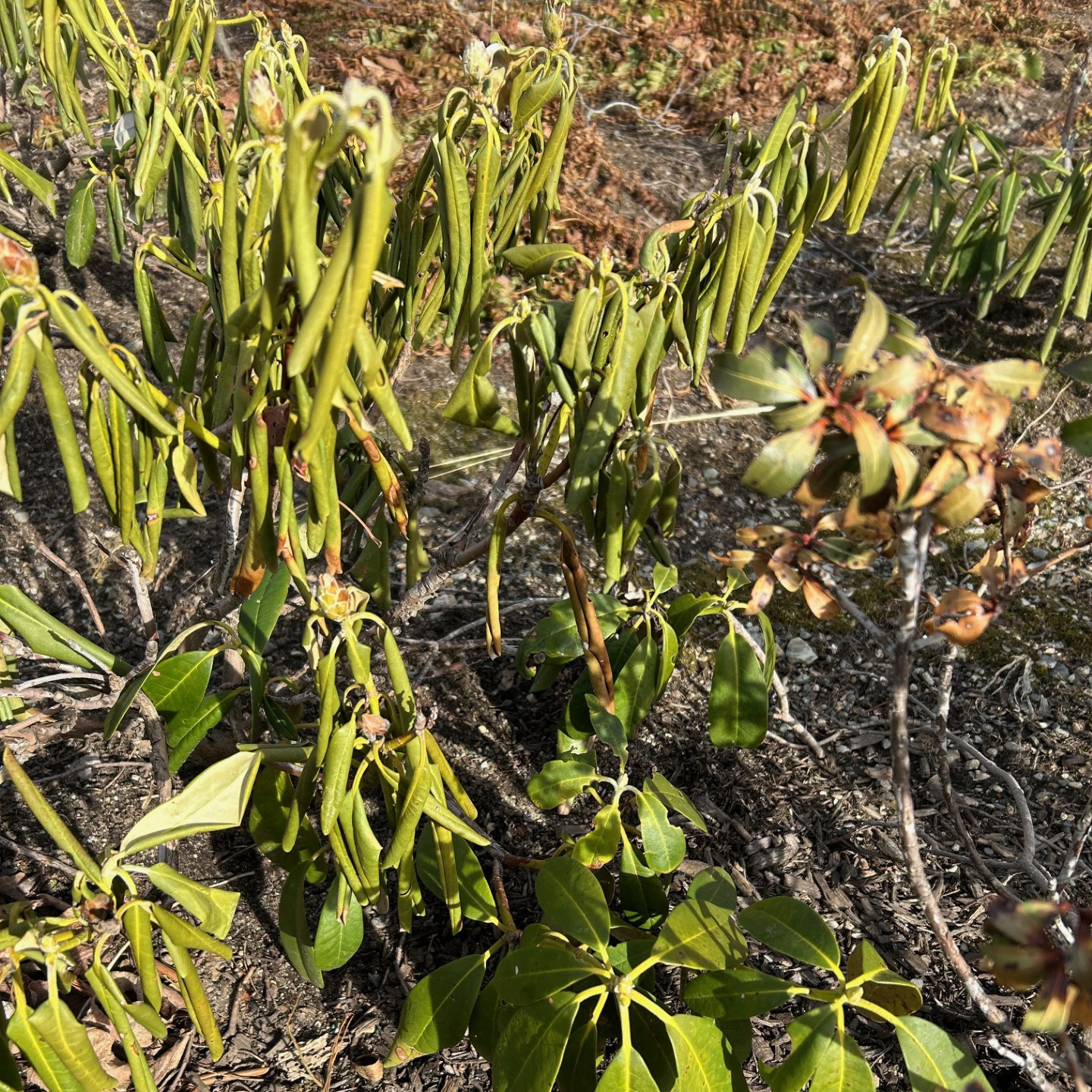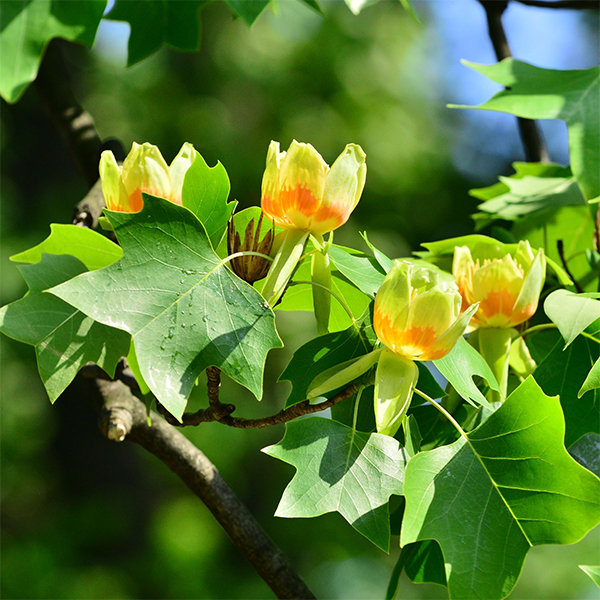
By Dirk Coburn, M.C.H.
How do I love Liriodendron tulipifera, commonly known as the tuliptree? Let me count the ways:
A tuliptree is a great shade tree, tall, broad, and stately
A tuliptree grows fast. Its annual growth can exceed three feet in some of its peak growth years. It can reach 25 to 30 feet in height within 10 years.
Your tuliptree offers a bonus seasonal interest in its green-and-yellow magnolia-like flowers that bloom in June (see photo).
A tuliptree’s foliage is similar in scale and texture to large shade maples or oaks, but gypsy moth caterpillars or winter moth caterpillars leave tuliptrees alone.
The foliage of a tuliptree turns clear canary yellow in the fall.
When my wife and I bought our home in 1986, I tried hard not to let on to the seller’s agent that the presence of a mature 80-foot tuliptree on the property was a major draw.
Periodically our tuliptree spawns seedlings, and I have given them to my mother, brothers, and sister. A tuliptree is equally at home at our New England orchard farmhouse as it is at my brother’s beautiful estate in the Hamptons.
The tuliptree is a North American native, with a range that extends from Massachusetts to Wisconsin and south to Florida and Mississippi.
Tuliptrees have a long and honorable history. Presidents Washington and Jefferson planted tuliptrees at Mount Vernon and Monticello.
Best of all – Weston Nurseries has tuliptrees in stock now AT OUR Hopkinton and Chelmsford locations!


